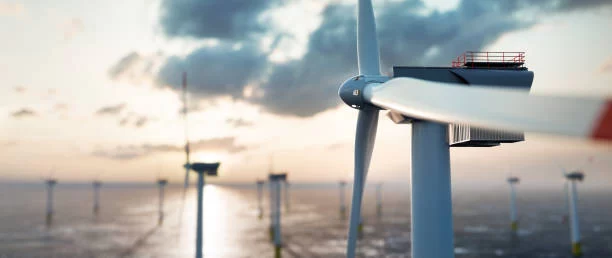About wind power plant: Technological Innovations and Future Prospects
Amidst the global energy transition wave, wind power emerges as a clean and renewable energy source undergoing unprecedented technological transformation, showcasing vast future development prospects.

1. Current Technological Breakthroughs in Wind Power
Large-scale Turbine Design
About wind power plant, in recent years, individual turbine capacity in wind farms has significantly increased. Larger blade lengths and taller tower heights allow turbines to capture more wind energy. For instance, there are now offshore turbines exceeding 10MW, with blades over a hundred meters long, greatly enhancing electricity generation efficiency.
Smart Control Technologies
About wind power plant, advanced smart control systems adjust turbine operations precisely based on real-time wind speed, direction, and grid demand. Predictive maintenance identifies potential faults early, facilitating timely repairs to minimize downtime and enhance turbine availability.
Offshore Wind Technology
As onshore wind resources are increasingly developed, offshore wind power has become a new growth area. Offshore locations offer advantages such as higher wind speeds and stable conditions, though they also pose challenges like complex marine environments and high installation/maintenance costs. Advances in floating offshore wind technology enable harnessing wind energy in deeper seas.
Integration with Energy Storage
About wind power plant,to address wind power’s intermittency and variability, integrating energy storage technologies like battery storage and supercapacitors becomes crucial. These technologies store excess electricity during strong winds and release it during weaker periods, ensuring grid stability.
2. Benefits and Impacts of Technological Innovation
Enhanced Energy Efficiency
About wind power plant,applications of large-scale turbines and smart control technologies significantly improve wind energy conversion efficiency, lowering electricity generation costs and enhancing wind power’s competitiveness in energy markets.
Reduced Environmental Impact
More efficient wind power technologies help minimize land use and natural resource consumption while reducing lifecycle carbon emissions.
Promotion of Economic Development
The expanding wind power industry chain creates numerous job opportunities and economic value. From turbine manufacturing and installation to related technology research and services, it injects new vitality into economic growth.
3. Future Trends in Wind Power Technology Development
Higher Turbine Capacities
Advancements in materials science and manufacturing processes suggest future turbines could exceed 15MW, further reducing costs.
Multi-energy Complementary Integration
Wind power will increasingly integrate with other renewable sources like solar, hydropower, and traditional energy sources, forming more interconnected and complementary systems to enhance energy supply stability and reliability.
Digitization and Smart Technology
Utilizing technologies such as big data, artificial intelligence, and the Internet of Things (IoT) enables digital management and smart operation of entire wind farms, boosting operational efficiency and economic benefits.
Deep-sea Wind Power Development
Technological advancements will expand wind power exploration into deeper seas, tapping into broader wind energy resources. New infrastructure and installation techniques will continue to emerge, reducing deep-sea wind power development costs.
4. Challenges and Strategies
Technological Bottlenecks
Despite significant progress, challenges such as fatigue life of blade materials and underwater cable transmission for offshore wind power remain. Addressing these requires sustained R&D investment and strengthened industry-academia collaboration to overcome technological barriers.
Grid Integration
Large-scale wind power integration into the grid demands enhanced grid infrastructure and smarter grid management to bolster power system flexibility and stability.
Environmental and Social Impacts
Developing wind power projects must consider ecological and community impacts, implementing effective measures for protection and compensation to achieve sustainable development.
Cost Control
While wind power costs continue to decline, further cost reductions are necessary for improved economic viability. This can be achieved through continued technological innovation, scalable production, and optimized supply chain management.
About wind power plant, technological innovation in wind power presents immense opportunities for energy transition. With ongoing advancements and expanded applications, wind power is poised to play a more significant role in the global energy landscape, contributing significantly to achieving sustainable development goals. Guided by technology, the future of wind power appears promising, offering humanity a cleaner and brighter energy future.
